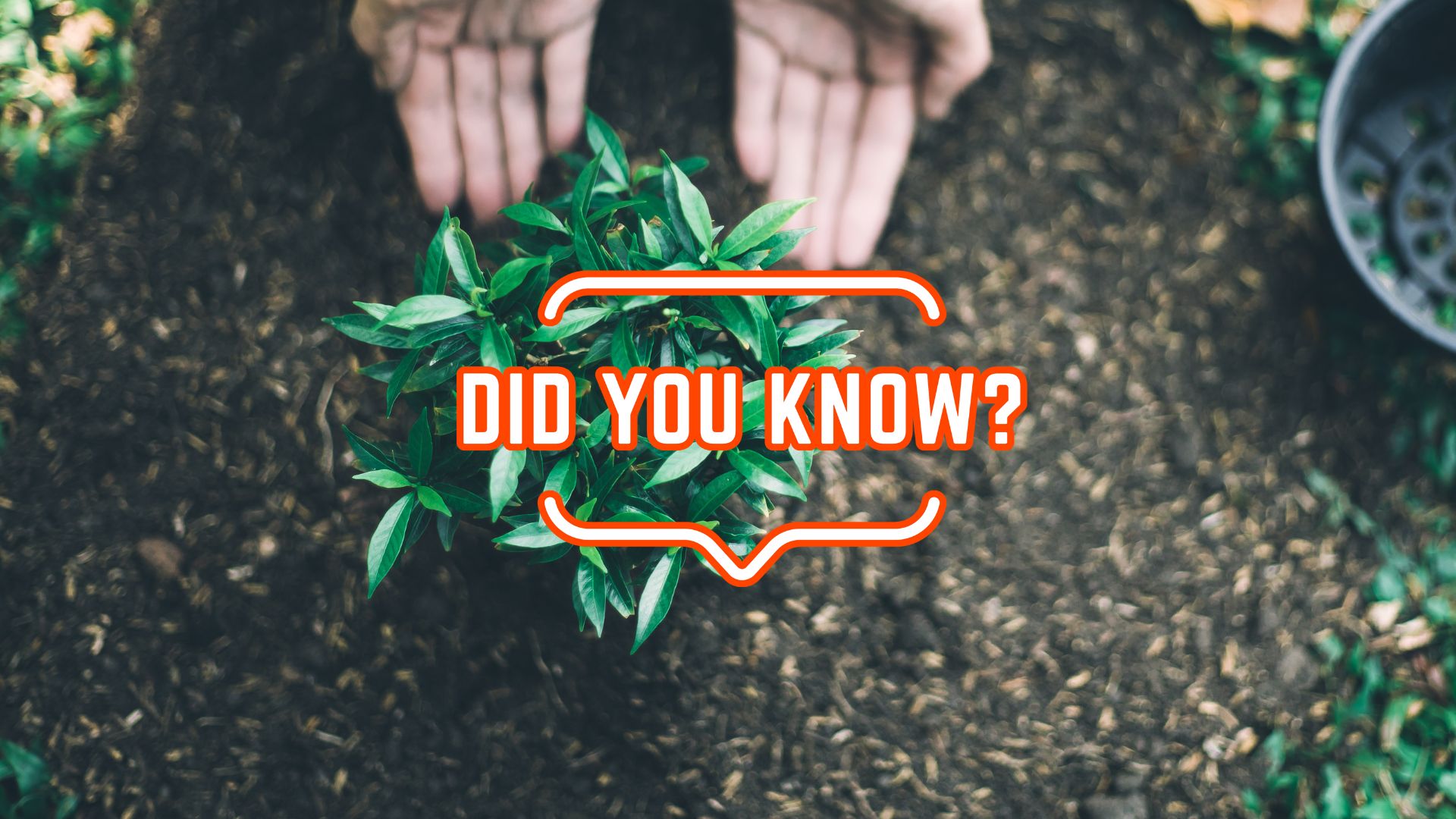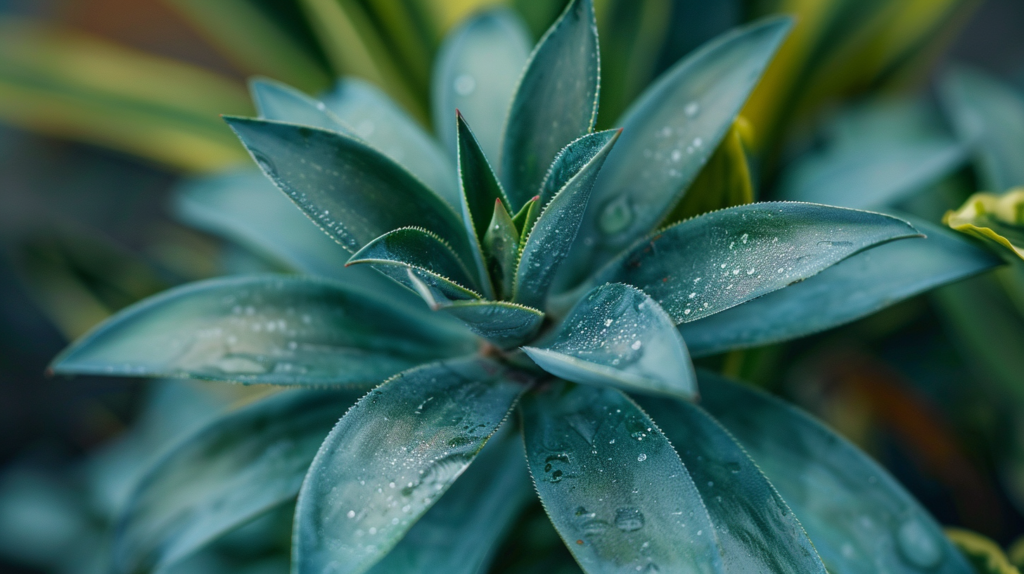Are you curious about the fascinating world of plants? Do you have what it takes to ace a plant trivia quiz?
Plants are essential to our lives, providing oxygen, food, medicine, and beauty, but how much do you know about them?
In this article, we’ll test your knowledge with an extensive collection of over 210+ plant trivia questions.
From basic botany to identifying specific species, these questions will challenge and expand your understanding of the plant kingdom.
Whether you’re a seasoned gardener or a nature enthusiast, this plant trivia will help you appreciate plants’ incredible diversity and importance in our world.
Get ready to flex your green thumb and dive into this exciting plant trivia adventure!
210+ Best Plant Trivia Questions

-
What is the Process by Which Plants Make Their Own Food Called?
A: Photosynthesis -
Which Part of The Plant Conducts Photosynthesis?
A: Leaves -
What is the Green Pigment in Plants that Helps Capture Sunlight for Photosynthesis?
A: Chlorophyll -
What is the Term for The Transfer of Pollen from The Anther to The Stigma of a Flower?
A: Pollination -
Which Plant Hormone is Responsible for Cell Elongation and Fruit Ripening?
A: Ethylene -
What is the Term for The Process by Which Plants Lose Water Through Their Leaves?
A: Transpiration -
Which Plant Tissue Transports Water and Nutrients from The Roots to The Leaves?
A: Xylem -
What is the Term for The Symbiotic Relationship Between Fungi and Plant Roots?
A: Mycorrhiza -
Which Plant Hormone Promotes Seed Germination and Bud Growth?
A: Gibberellin -
What is the Term for The Process by Which Plants Shed Their Leaves?
A: Abscission -
Which Plant Tissue is Responsible for The Transport of Sugars and Nutrients Throughout the Plant?
A: Phloem -
What is the Term for The Attraction of Plant Roots Towards Gravity?
A: Gravitropism -
Which Plant Hormone is Responsible for Apical Dominance and Inhibits Lateral Bud Growth?
A: Auxin -
What is the Term for The Process by Which Plants Convert Light Energy Into Chemical Energy During Photosynthesis?
A: Light-Dependent Reactions -
Which Plant Organelle is Responsible for Storing Water and Maintaining Cell Turgor Pressure?
A: Vacuole -
What is the Term for The Process by Which Plants Convert Carbon Dioxide Into Sugars During Photosynthesis?
A: Calvin Cycle -
Which Plant Hormone Promotes Stomatal Closure and Helps Plants Conserve Water During Drought Stress?
A: Abscisic Acid -
What is the Term for The Attraction of Plant Shoots Towards Light?
A: Phototropism -
Which Plant Tissue is Responsible for The Growth and Development of New Cells?
A: Meristem -
What is the Term for The Process by Which Plants Absorb Water and Nutrients from The Soil?
A: Uptake -
Which Plant Hormone is Involved in Fruit Development and Ripening?
A: Ethylene -
What is the Term for The Process by Which Plants Convert Starches Into Sugars?
A: Hydrolysis -
Which Plant Organelle is Responsible for Breaking Down and Recycling Old or Damaged Cell Parts?
A: Lysosome -
What is the Term for The Process by Which Plants Create New Individuals without Sexual Reproduction?
A: Vegetative Reproduction -
Which Plant Hormone Promotes Cell Division and Growth in Roots and Shoots?
A: Cytokinin -
What is the Term for The Process by Which Plants Close Their Stomata to Prevent Water Loss?
A: Stomatal Closure -
Which Plant Tissue is Responsible for Providing Mechanical Support and Structure to The Plant?
A: Sclerenchyma -
What is the Term for The Process by Which Plants Bend Towards a Support or Anchor Point?
A: Thigmotropism -
Which Plant Hormone is Involved in Seed Dormancy and Inhibits Seed Germination?
A: Abscisic Acid -
What is the Term for The Process by Which Plants Remove Excess Salts and Minerals from Their Tissues?
A: Salt Excretion -
Which Plant Organelle is Responsible for Storing Starch Granules?
A: Amyloplast -
What is the Term for The Process by Which Plants Create New Cells During Growth and Development?
A: Cell Division -
Which Plant Hormone Promotes the Formation of Adventitious Roots?
A: Auxin -
What is the Term for The Process by Which Plants Absorb Carbon Dioxide from The Atmosphere?
A: Carbon Fixation -
Which Plant Tissue is Responsible for The Production of Secondary Metabolites, Such as Pigments and Fragrances?
A: Parenchyma -
What is the Term for The Process by Which Plants Move Their Leaves or Petals in Response to Touch?
A: Thigmonasty -
Which Plant Hormone is Involved in The Formation of Lateral Roots?
A: Auxin -
What is the Term for The Process by Which Plants Convert Light Energy Into Chemical Energy During Photosynthesis?
A: Photophosphorylation -
Which Plant Organelle is Responsible for The Synthesis and Storage of Lipids?
A: Leucoplast -
What is the Term for The Process by Which Plants Create New Individuals Through the Fusion of Gametes?
A: Sexual Reproduction -
Which Plant Hormone Promotes the Formation of Abscission Layers in Leaves and Fruits?
A: Ethylene -
What is the Term for The Process by Which Plants Absorb Oxygen from The Atmosphere?
A: Respiration -
Which Plant Tissue is Responsible for The Storage of Water and Nutrients?
A: Parenchyma -
What is the Term for The Process by Which Plants Move Their Chloroplasts in Response to Light Intensity?
A: Chloroplast Movement -
Which Plant Hormone is Involved in The Formation of Lateral Buds?
A: Cytokinin -
What is the Term for The Process by Which Plants Convert Sugars Into Starches for Storage?
A: Polymerization -
Which Plant Organelle is Responsible for The Synthesis and Storage of Proteins?
A: Ribosome -
What is the Term for The Process by Which Plants Create New Individuals Through the Development of Adventitious Shoots?
A: Layering -
Which Plant Hormone Promotes the Formation of Root Hairs?
A: Ethylene -
What is the Term for The Process by Which Plants Release Water Vapor Into the Atmosphere Through Their Leaves?
A: Guttation(add an Image of Plant Trivia Questions)
-
Which Plant Tissue is Responsible for Transporting Water and Minerals from The Roots to The Stems and Leaves?
A: Xylem -
What is the Term for The Process by Which Plants Move Their Stems in a Circular Motion?
A: Circumnutation -
Which Plant Hormone is Involved in The Formation of Adventitious Roots from Stem Cuttings?
A: Auxin -
What is the Term for The Process by Which Plants Convert Organic Compounds Into Energy During Respiration?
A: Cellular Respiration -
Which Plant Organelle is Responsible for The Synthesis and Storage of Pigments, Such as Carotenoids?
A: Chromoplast -
What is the Term for The Process by Which Plants Create New Individuals Through the Formation of Bulbils?
A: Bulbil Formation -
Which Plant Hormone Promotes the Formation of Lateral Roots in Response to Nutrient Availability?
A: Cytokinin -
What is the Term for The Process by Which Plants Absorb Water Through Their Roots Using Osmosis?
A: Root Pressure -
Which Plant Tissue is Responsible for The Formation of Callus Tissue During Wound Healing?
A: Meristematic Tissue -
What is the Term for The Process by Which Plants Move Their Leaves in Response to Changes in Light Direction?
A: Heliotropism -
Which Plant Hormone is Involved in The Formation of Root Nodules in Legumes?
A: Cytokinin -
What is the Term for The Process by Which Plants Convert Atmospheric Nitrogen Into Ammonia?
A: Nitrogen Fixation -
Which Plant Organelle is Responsible for The Synthesis and Storage of Alkaloids?
A: Vacuole -
What is the Term for The Process by Which Plants Create New Individuals Through the Formation of Plantlets on Their Leaves?
A: Leaf Plantlet Formation -
Which Plant Hormone Promotes the Formation of Adventitious Shoots from Root Cuttings?
A: Cytokinin -
What is the Term for The Process by Which Plants Absorb Minerals from The Soil Through Their Roots?
A: Ion Uptake -
Which Plant Tissue is Responsible for The Formation of Cork Tissue During Secondary Growth?
A: Cork Cambium -
What is the Term for The Process by Which Plants Move Their Flowers in Response to Changes in Temperature?
A: Thermotropism -
Which Plant Hormone is Involved in The Formation of Mycorrhizal Associations?
A: Strigolactone -
What is the Term for The Process by Which Plants Convert Atmospheric Carbon Dioxide Into Organic Compounds During Photosynthesis?
A: Carbon Reduction -
Which Plant Organelle is Responsible for The Synthesis and Storage of Glucosinolates?
A: Vacuole -
What is the Term for The Process by Which Plants Create New Individuals Through the Formation of Adventitious Buds on Their Roots?
A: Root Suckering -
Which Plant Hormone Promotes the Formation of Lateral Roots in Response to Water Availability?
A: Abscisic Acid -
What is the Term for The Process by Which Plants Release Excess Water Through Specialized Pores in Their Leaves?
A: Hydathode Secretion -
Which Plant Tissue is Responsible for The Formation of Heartwood in Trees?
A: Xylem Parenchyma -
What is the Term for The Process by Which Plants Move Their Leaves in Response to Physical Contact?
A: Thigmomorphogenesis -
Which Plant Hormone is Involved in The Formation of Root Hairs in Response to Phosphate Deficiency?
A: Ethylene -
What is the Term for The Process by Which Plants Convert Atmospheric Oxygen Into Carbon Dioxide During Respiration?
A: Oxidative Phosphorylation -
Which Plant Organelle is Responsible for The Synthesis and Storage of Tannins?
A: Vacuole -
What is the Term for The Process by Which Plants Create New Individuals Through the Formation of Adventitious Shoots on Their Stems?
A: Stem Cutting -
Which Plant Hormone Promotes the Formation of Adventitious Roots in Response to Wounding?
A: Jasmonic Acid -
What is the Term for The Process by Which Plants Absorb Organic Compounds from The Soil Through Their Roots?
A: Organic Nutrient Uptake -
Which Plant Tissue is Responsible for The Formation of Lenticels in The Bark of Trees?
A: Phellogen -
What is the Term for The Process by Which Plants Move Their Stems in Response to Changes in Light Intensity?
A: Photoperiodism -
Which Plant Hormone is Involved in The Formation of Root Nodules in Actinorhizal Plants?
A: Auxin -
What is the Term for The Process by Which Plants Convert Sugars Into Organic Acids During Respiration?
A: Glycolysis -
Which Plant Organelle is Responsible for The Synthesis and Storage of Anthocyanins?
A: Vacuole -
What is the Term for The Process by Which Plants Create New Individuals Through the Formation of Adventitious Buds on Their Leaves?
A: Leaf Cutting -
Which Plant Hormone Promotes the Formation of Lateral Roots in Response to Mechanical Impedance?
A: Ethylene -
What is the Term for The Process by Which Plants Release Oxygen Into the Atmosphere as a Byproduct of Photosynthesis?
A: Oxygen Evolution -
Which Plant Tissue is Responsible for The Formation of Tyloses in The Xylem Vessels?
A: Xylem Parenchyma -
What is the Term for The Process by Which Plants Move Their Flowers in Response to Changes in Humidity?
A: Hydrotropism -
Which Plant Hormone is Involved in The Formation of Adventitious Roots in Response to Flooding?
A: Ethylene -
What is the Term for The Process by Which Plants Convert Organic Acids Into Amino Acids During Respiration?
A: Amino Acid Synthesis -
Which Plant Organelle is Responsible for The Synthesis and Storage of Betacyanins?
A: Vacuole -
What is the Term for The Process by Which Plants Create New Individuals Through the Formation of Adventitious Buds on Their Roots?
A: Root Cutting -
Which Plant Hormone Promotes the Formation of Adventitious Shoots in Response to Pruning?
A: Cytokinin -
What is the Term for The Process by Which Plants Absorb Amino Acids from The Soil Through Their Roots?
A: Amino Acid Uptake -
Which Plant Tissue is Responsible for The Formation of Resin Ducts in Coniferous Trees?
A: Resin Duct Epithelium -
What is the Term for The Process by Which Plants Move Their Leaves in Response to Changes in Water Availability?
A: Hyponasty(add an Image of Plant Trivia Questions)
-
Which Plant Hormone is Involved in The Formation of Root Hairs in Response to Iron Deficiency?
A: Ethylene -
What is the Term for The Process by Which Plants Convert Amino Acids Into Proteins During Respiration?
A: Protein Synthesis -
Which Plant Organelle is Responsible for The Synthesis and Storage of Cyanogenic Glycosides?
A: Vacuole -
What is the Term for The Process by Which Plants Create New Individuals Through the Formation of Adventitious Shoots on Their Flowers?
A: Floral Cutting -
Which Plant Hormone Promotes the Formation of Lateral Roots in Response to Salt Stress?
A: Abscisic Acid -
What is the Term for The Process by Which Plants Release Carbon Dioxide Into the Atmosphere During Respiration?
A: Carbon Dioxide Evolution -
Which Plant Tissue is Responsible for The Formation of Gum Ducts in Trees?
A: Gum Duct Epithelium -
What is the Term for The Process by Which Plants Move Their Stems in Response to Changes in Gravity?
A: Gravitropism -
Which Plant Hormone is Involved in The Formation of Mycorrhizal Associations in Response to Nutrient Deficiency?
A: Strigolactone -
What is the Term for The Process by Which Plants Convert Proteins Into Amino Acids During Senescence?
A: Protein Degradation -
Which Plant Organelle is Responsible for The Synthesis and Storage of Saponins?
A: Vacuole -
What is the Term for The Process by Which Plants Create New Individuals Through the Formation of Adventitious Buds on Their Flowers?
A: Floral Bud Cutting -
Which Plant Hormone Promotes the Formation of Adventitious Roots in Response to Nutrient Deficiency?
A: Auxin -
What is the Term for The Process by Which Plants Absorb Water and Nutrients from The Soil Through Their Root Hairs?
A: Root Hair Absorption -
Which Plant Tissue is Responsible for The Formation of Laticifers in Rubber Trees?
A: Laticifer Cells -
What is the Term for The Process by Which Plants Move Their Flowers in Response to Changes in Light Quality?
A: Photomorphogenesis -
Which Plant Hormone is Involved in The Formation of Root Nodules in Frankia-Associated Plants?
A: Cytokinin -
What is the Term for The Process by Which Plants Convert Starch Into Sugars During Seed Germination?
A: Starch Hydrolysis -
Which Plant Organelle is Responsible for The Synthesis and Storage of Cardiac Glycosides?
A: Vacuole -
What is the Term for The Process by Which Plants Create New Individuals Through the Formation of Adventitious Shoots on Their Fruits?
A: Fruit Cutting -
Which Plant Hormone Promotes the Formation of Lateral Roots in Response to Drought Stress?
A: Abscisic Acid -
What is the Term for The Process by Which Plants Release Volatile Organic Compounds Into the Atmosphere?
A: Volatile Emission -
Which Plant Tissue is Responsible for The Formation of Nectaries in Flowers?
A: Nectary Parenchyma -
What is the Term for The Process by Which Plants Move Their Leaves in Response to Changes in Photoperiod?
A: Photoperiodic Movement -
Which Plant Hormone is Involved in The Formation of Adventitious Roots in Response to Waterlogging?
A: Ethylene -
What is the Term for The Process by Which Plants Convert Fatty Acids Into Sugars During Seed Germination?
A: Beta-Oxidation -
Which Plant Organelle is Responsible for The Synthesis and Storage of Betalains?
A: Vacuole -
What is the Term for The Process by Which Plants Create New Individuals Through the Formation of Adventitious Buds on Their Fruits?
A: Fruit Bud Cutting -
Which Plant Hormone Promotes the Formation of Adventitious Shoots in Response to Apex Removal?
A: Cytokinin -
What is the Term for The Process by Which Plants Absorb Organic Acids from The Soil Through Their Roots?
A: Organic Acid Uptake -
What is the Term for The Process by Which Plants Convert Light Energy Into Chemical Energy During Photosynthesis?
A: Photophosphorylation -
Which Plant Tissue is Responsible for The Formation of Trichomes on Leaf Surfaces?
A: Epidermal Tissue -
What is the Term for The Process by Which Plants Move Their Flowers in Response to Changes in Temperature?
A: Thermonasty -
Which Plant Hormone is Involved in The Formation of Root Hairs in Response to Potassium Deficiency?
A: Ethylene -
What is the Term for The Process by Which Plants Convert Proteins Into Amino Acids During Leaf Senescence?
A: Proteolysis -
Which Plant Organelle is Responsible for The Synthesis and Storage of Monoterpenes?
A: Leucoplast -
What is the Term for The Process by Which Plants Create New Individuals Through the Formation of Adventitious Shoots on Their Leaves?
A: Leaf Bud Cutting -
Which Plant Hormone Promotes the Formation of Lateral Roots in Response to Phosphorus Deficiency?
A: Strigolactone -
What is the Term for The Process by Which Plants Release Oxygen Into the Atmosphere During Photosynthesis?
A: Oxygen Evolution -
Which Plant Tissue is Responsible for The Formation of Idioblasts in Leaves?
A: Mesophyll -
What is the Term for The Process by Which Plants Move Their Leaves in Response to Changes in Humidity?
A: Hygronasty -
Which Plant Hormone is Involved in The Formation of Adventitious Roots in Response to Mechanical Stress?
A: Jasmonic Acid -
What is the Term for The Process by Which Plants Convert Lipids Into Sugars During Seed Germination?
A: Glyoxylate Cycle -
Which Plant Organelle is Responsible for The Synthesis and Storage of Sesquiterpenes?
A: Leucoplast -
What is the Term for The Process by Which Plants Create New Individuals Through the Formation of Adventitious Buds on Their Stems?
A: Stem Bud Cutting -
Which Plant Hormone Promotes the Formation of Adventitious Shoots in Response to Gibberellin Treatment?
A: Cytokinin -
What is the Term for The Process by Which Plants Absorb Potassium Ions from The Soil Through Their Roots?
A: Potassium Uptake -
Which Plant Tissue is Responsible for The Formation of Hydathodes in Leaves?
A: Epithem Tissue -
What is the Term for The Process by Which Plants Move Their Flowers in Response to Changes in Gravity?
A: Gravotropism -
Which Plant Hormone is Involved in The Formation of Mycorrhizal Associations in Response to Phosphorus Deficiency?
A: Strigolactone(add an Image of Plant Trivia Questions)
-
What is the Term for The Process by Which Plants Convert Amino Acids Into Amides During Nitrogen Assimilation?
A: Amide Synthesis -
Which Plant Organelle is Responsible for The Synthesis and Storage of Diterpenes?
A: Leucoplast -
What is the Term for The Process by Which Plants Create New Individuals Through the Formation of Adventitious Shoots on Their Roots?
A: Root Shoot Cutting -
Which Plant Hormone Promotes the Formation of Lateral Roots in Response to Iron Deficiency?
A: Ethylene -
What is the Term for The Process by Which Plants Release Carbon Dioxide Into the Atmosphere During Photorespiration?
A: Carbon Dioxide Release -
Which Plant Tissue is Responsible for The Formation of Bulliform Cells in Leaves?
A: Adaxial Epidermis -
What is the Term for The Process by Which Plants Move Their Leaves in Response to Changes in Electrical Fields?
A: Electrotropism -
Which Plant Hormone is Involved in The Formation of Root Hairs in Response to Calcium Deficiency?
A: Auxin -
What is the Term for The Process by Which Plants Convert Sugars Into Organic Acids During Respiration?
A: Tricarboxylic Acid Cycle -
Which Plant Organelle is Responsible for The Synthesis and Storage of Triterpenes?
A: Leucoplast -
What is the Term for The Process by Which Plants Create New Individuals Through the Formation of Adventitious Buds on Their Flowers?
A: Floral Bud Cutting -
Which Plant Hormone Promotes the Formation of Adventitious Roots in Response to Zinc Deficiency?
A: Auxin -
What is the Term for The Process by Which Plants Absorb Magnesium Ions from The Soil Through Their Roots?
A: Magnesium Uptake -
Which Plant Tissue is Responsible for The Formation of Lithocysts in Leaves?
A: Palisade Mesophyll -
What is the Term for The Process by Which Plants Move Their Flowers in Response to Changes in Magnetic Fields?
A: Magnetotropism -
Which Plant Hormone is Involved in The Formation of Mycorrhizal Associations in Response to Zinc Deficiency?
A: Strigolactone -
What is the Term for The Process by Which Plants Convert Nitrate Into Amino Acids During Nitrogen Assimilation?
A: Nitrate Reduction -
Which Plant Organelle is Responsible for The Synthesis and Storage of Tetraterpenes?
A: Leucoplast -
What is the Term for The Process by Which Plants Create New Individuals Through the Formation of Adventitious Shoots on Their Flowers?
A: Floral Shoot Cutting -
Which Plant Hormone Promotes the Formation of Lateral Roots in Response to Manganese Deficiency?
A: Ethylene -
What is the Term for The Process by Which Plants Release Methane Into the Atmosphere During Anaerobic Respiration?
A: Methanogenesis -
Which Plant Tissue is Responsible for The Formation of Transfer Cells in Leaves?
A: Phloem Parenchyma -
What is the Term for The Process by Which Plants Move Their Leaves in Response to Changes in Oxygen Concentration?
A: Aerotropism -
Which Plant Hormone is Involved in The Formation of Root Hairs in Response to Boron Deficiency?
A: Ethylene -
What is the Term for The Process by Which Plants Convert Fatty Acids Into Sugars During Senescence?
A: Gluconeogenesis -
Which Plant Organelle is Responsible for The Synthesis and Storage of Polyterpenes?
A: Leucoplast -
What is the Term for The Process by Which Plants Create New Individuals Through the Formation of Adventitious Buds on Their Fruits?
A: Fruit Bud Cutting -
Which Plant Hormone Promotes the Formation of Adventitious Shoots in Response to Cytokinin Treatment?
A: Auxin -
What is the Term for The Process by Which Plants Absorb Sulfate Ions from The Soil Through Their Roots?
A: Sulfate Uptake -
Which Plant Tissue is Responsible for The Formation of Silica Cells in Leaves?
A: Epidermal Tissue -
What is the Term for The Process by Which Plants Move Their Flowers in Response to Changes in Electrical Conductivity?
A: Electrotropic Movement -
Which Plant Hormone is Involved in The Formation of Mycorrhizal Associations in Response to Copper Deficiency?
A: Strigolactone -
What is the Term for The Process by Which Plants Convert Amino Acids Into Alkaloids During Secondary Metabolism?
A: Alkaloid Biosynthesis -
Which Plant Organelle is Responsible for The Synthesis and Storage of Sesterterpenoids?
A: Leucoplast -
What is the Term for The Process by Which Plants Create New Individuals Through the Formation of Adventitious Shoots on Their Fruits?
A: Fruit Shoot Cutting -
Which Plant Hormone Promotes the Formation of Lateral Roots in Response to Copper Deficiency?
A: Ethylene -
What is the Term for The Process by Which Plants Release Nitrous Oxide Into the Atmosphere During Denitrification?
A: Nitrous Oxide Emission -
Which Plant Tissue is Responsible for The Formation of Subsidiary Cells in Stomata?
A: Guard Cell Mother Cell -
What is the Term for The Process by Which Plants Move Their Leaves in Response to Changes in Carbon Dioxide Concentration?
A: Carbon Dioxide-Induced Movement -
Which Plant Hormone is Involved in The Formation of Root Hairs in Response to Sulfur Deficiency?
A: Ethylene -
What is the Term for The Process by Which Plants Convert Sugars Into Polysaccharides During Cell Wall Synthesis?
A: Polysaccharide Synthesis -
Which Plant Organelle is Responsible for The Synthesis and Storage of Triterpenoid Saponins?
A: Vacuole -
What is the Term for The Process by Which Plants Create New Individuals Through the Formation of Adventitious Buds on Their Leaves?
A: Leaf Bud Cutting -
Which Plant Hormone Promotes the Formation of Adventitious Roots in Response to Iron Deficiency?
A: Ethylene -
What is the Term for The Process by Which Plants Absorb Chloride Ions from The Soil Through Their Roots?
A: Chloride Uptake -
Which Plant Tissue is Responsible for The Formation of Oil Glands in Leaves?
A: Secretory Tissue -
What is the Term for The Process by Which Plants Move Their Flowers in Response to Changes in Wind Direction?
A: Anemotropism -
Which Plant Hormone is Involved in The Formation of Mycorrhizal Associations in Response to Manganese Deficiency?
A: Strigolactone -
What is the Term for The Process by Which Plants Convert Amino Acids Into Glucosinolates During Secondary Metabolism?
A: Glucosinolate Biosynthesis -
Which Plant Organelle is Responsible for The Synthesis and Storage of Sesquiterpenoid Lactones?
A: Leucoplast(add an Image of Plant Trivia Questions)
-
What is the Term for The Process by Which Plants Create New Individuals Through the Formation of Adventitious Shoots on Their Leaves?
A: Leaf Shoot Cutting -
Which Plant Hormone Promotes the Formation of Lateral Roots in Response to Boron Deficiency?
A: Ethylene -
What is the Term for The Process by Which Plants Release Hydrogen Sulfide Into the Atmosphere During Sulfate Reduction?
A: Hydrogen Sulfide Emission -
Which Plant Tissue is Responsible for The Formation of Salt Glands in Leaves?
A: Epidermal Tissue -
What is the Term for The Process by Which Plants Move Their Leaves in Response to Changes in Light Wavelength?
A: Phototropic Movement -
Which Plant Hormone is Involved in The Formation of Root Hairs in Response to Magnesium Deficiency?
A: Ethylene -
What is the Term for The Process by Which Plants Convert Sugars Into Organic Acids During Fermentation?
A: Lactic Acid Fermentation -
Which Plant Organelle is Responsible for The Synthesis and Storage of Diterpenoid Alkaloids?
A: Vacuole -
What is the Term for The Process by Which Plants Create New Individuals Through the Formation of Adventitious Buds on Their Roots?
A: Root Bud Cutting -
Which Plant Hormone Promotes the Formation of Adventitious Shoots in Response to Auxin Treatment?
A: Cytokinin -
What is the Term for The Process by Which Plants Absorb Bicarbonate Ions from The Soil Through Their Roots?
A: Bicarbonate Uptake
Conclusion
You’re now equipped with various plant trivia questions to challenge your knowledge and impress your friends.
From basic botany to specific plant processes, these questions have covered a wide range of topics, helping you gain a deeper appreciation for the complex and fascinating world of plants.
Whether you’re a seasoned gardener or a curious learner, this extensive trivia collection will keep you engaged and expand your understanding of the plant kingdom.
So, go ahead and put your newfound knowledge to the test! Share these questions with fellow plant enthusiasts, and continue exploring the incredible world of plants.
Remember, there’s always more to discover, and every bit of plant trivia you learn brings you one step closer to becoming a true plant expert.
















